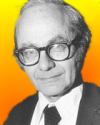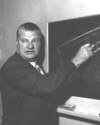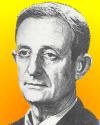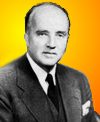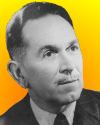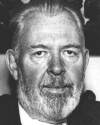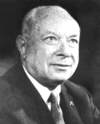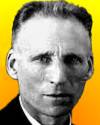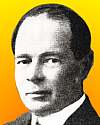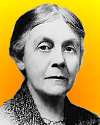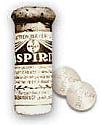| FEBRUARY 27 - DEATHS |
|
|
| George Herbert Hitchings |
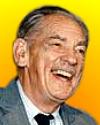
(source) |  Died 27 Feb 1998 (born 18 Apr 1905) Died 27 Feb 1998 (born 18 Apr 1905)
American pharmacologist was a medical research pioneer who was awarded a share of the Nobel Prize for Physiology or Medicine in 1988 (with Gertrude B. Elion and Sir James W. Black) for development of drugs for several major diseases. In the 1950s, he and colleague Elion developed thioguanine and 6-mercaptopurine, that treated leukemia, and in 1957, azathioprine, used in treating severe rheumatoid arthritis and other autoimmune disorders. Their drug allopurinol was effective treatment for gout. Other important drugs they developed include pyrimethamine, an antimalarial agent; trimethoprim, a treatment for urinary and respiratory tract infections; and acyclovir, the first effective treatment for viral herpes.« |
| William Ross Maples |
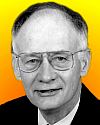
(source) |  Died 27 Feb 1997 (born 7 Aug 1937) Died 27 Feb 1997 (born 7 Aug 1937)
American forensic anthropologist who examined and identified the skeletons of a number of historical figures, including Tsar Nicholas II and other members of the Romanov family killed in 1918 by the Bolsheviks, Vietnam MIAs, conquistador Francisco Pizarro, and in 1994 helped convict Byron De La Beckwith of the 1963 murder of civil rights leader Medgar Evers. At the University of Florida, the C.A. Pound Human Identification Laboratory was created through Maples' energetic fundraising. This sophisticated, unique facility, dedicated to forensic anthropology opened its doors in 1986. Maples wrote Dead Men Do Tell Tales (1994, with Michael Browning). |
| Kingsley Davis |
|  Died 27 Feb 1997 (born 20 Aug 1908) Died 27 Feb 1997 (born 20 Aug 1908) 
American sociologist and demographer who was a world-renowned expert on population trends; he coined the terms population explosion and zero population growth and promoted methods of bringing the latter about. His specific studies of American society led him to work on a general science of world society, based on empirical analysis of each society in its habitat. Later, however, he came to be concerned about low birthrates in developed countries, fearing a shortage of educated leaders. |
| Konrad Lorenz |
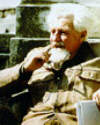
(source) |  Died 27 Feb 1989 (born 7 Nov 1903) Died 27 Feb 1989 (born 7 Nov 1903)
Austrian zoologist, founder of modern ethology, the study of animal behaviour by means of comparative zoological methods. He was known affectionately by his pupils as the "father of the grey geese" which he studied. His ideas revealed how behavioral patterns may be traced to an evolutionary past, and he was also known for his work on the roots of aggression. He shared the 1973 Nobel Prize for Physiology and Medicine, for developing a unified, evolutionary theory of animal and human behaviour. He was also a vehement environmentalist, criticizing prodigality and believed that nature protection is necessary for the preservation of humanity. Even late in life, he participated in demonstrations even if in conflict with government and authorities. |
| David Keilin |
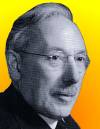
(source) |  Died 27 Feb 1963 (born 21 Mar 1887) Died 27 Feb 1963 (born 21 Mar 1887)
Russian-British biochemist who discovered cytochromes, as enzymes critical to the cell's use of oxygen (1923). His career began as an entomologist studying the life cycles of flies. While studying the absorption spectrum of the muscles of the horse botfly, that he noticed four absoption bands that disappeared when the cell suspension was shaken in air, but reappeared afterwards. He had found a respiratory enzyme. He named it cytochrome, and began a thorough investigation of its role in cellular respiration. Like haemoglobin, the cytochrome enzyme contains iron. Cytochrome is a pigment found in some cells, such as bacteria and yeast. He studied also catalase and peroxidase which are also iron-containing enzymes with a role involving oxygen. |
| Ivan Petrovich Pavlov |
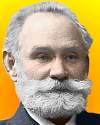
(source) |  Died 27 Feb 1936 (born 14 Sep 1849) Died 27 Feb 1936 (born 14 Sep 1849)
Russian physiologist known chiefly for his development of the concept of the conditioned reflex. In a now-classic experiment, he trained a hungry dog to salivate at the sound of a bell, which was previously associated with the sight of food. He received the 1904 Nobel Prize in Physiology or Medicine. |
| Adam Sedgwick |
|  Died 27 Feb 1913 (born 28 Sep 1854) Died 27 Feb 1913 (born 28 Sep 1854)
English zoologist, a grandnephew of the geologist Adam Sedgwick, who is best known for his researches on the wormlike organism Peripatus, which he recognized as the zoologically important connecting link between the Annelida, or segmented worms, and the Arthropoda, such as crabs, spiders, and insects. |
| Samuel Pierpont Langley |
|  Died 27 Feb 1906 (born 22 Aug 1834) Died 27 Feb 1906 (born 22 Aug 1834)
American astronomer, physicist, and aeronautics pioneer who built the first heavier-than-air flying machine to achieve sustained flight. He launched his Aerodrome No.5 on 6 May 1896 using a spring-actuated catapult mounted on top of a houseboat on the Potomac River, near Quantico, Virginia. He also researched the relationship of solar phenomena to meteorology.« |
| Bryan Donkin |
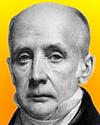
(source) |   Died 27 Feb 1855 (born 22 Mar 1768) Died 27 Feb 1855 (born 22 Mar 1768)
English mechanical engineer and inventor. After the Fourdrinier brothers imported from France a prototype machine for making paper in continuous lengths (1802), Donkin assisted with design improvements and to establish a factory. By 1808, Donkin acquired the works and a license to manufacture the paper-making machines. He also developed printing machinery and invented the composition roller used in printing. Donkin held other patents on gearing, steel pens, paper-making and railway wheels. He also worked on the preservation of food in airtight containers (1813), revolution counters and improved accurate screw threads for graduating mathematical scales. Three more generations of his family included engineers.«  [Image right: Donkin/Fourdrinier paper-making machine 1820.] [Image right: Donkin/Fourdrinier paper-making machine 1820.] |
| Jean(-Rodolphe) Perronet |
|  Died 27 Feb 1794 (born 8 Oct 1708) Died 27 Feb 1794 (born 8 Oct 1708)
French civil engineer renowned for his stone-arch bridges, especially the Pont de la Concorde, Paris. |
| John Arbuthnot |
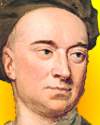
(source) |  Died 27 Feb 1735 (baptised 29 April 1667) Died 27 Feb 1735 (baptised 29 April 1667) 
Scottish mathematician and physician. In 1692, he published Of the Laws of Chance, the first work on probability published in English, being his translation of a work by Huygens to which he added further games of chance. In 1710, he published a paper discussing the slight excess of male births over female births since 1629; it was perhaps the first application of probability to social statistics and included the first formal test of significance. As a political satirist, he wrote a series of pamphlets featuring the character John Bull that became an iconic Englishman. Arbuthnot joined with Jonathan Swift, Alexander Pope, and John Gay in founding the famous Scriblerus Club. From 1705 he was physician to Queen Anne until her death in 1714.«  |
| John Evelyn |
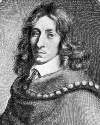
(source) |  Died 27 Feb 1706 (born 31 Oct 1620) Died 27 Feb 1706 (born 31 Oct 1620)
English country gentleman, diarist, author of some 30 books on the fine arts, forestry, and religious topics. A lifelong member of the Royal Society, he produced for the commissioners of the navy the book, Sylva, or a Discourse of Forest-trees, and the Propagation of Timber (1664), encouraging estate owners to plant timber for the navy. It was the first important work on conservation, published at a time when English forests were being stripped of timber to build ships for the expanding British Navy. The book gave a description of the various kinds of trees, their cultivation, uses, and advice on pruning, insect control, wound treatment, and transplanting. The study, with numerous modifications, had gone through 10 editions by 1825. |
|
|
|






























!["Coupling" 1976 [Gum-bichromate]](http://2.bp.blogspot.com/_IoU3bEFUwWc/S69lnr9G6AI/AAAAAAAAH58/O40Gg-G6rKk/S150/COUPLING+3.jpg)

























